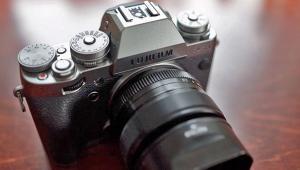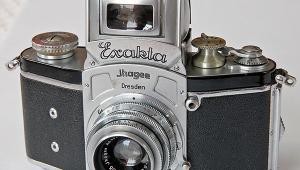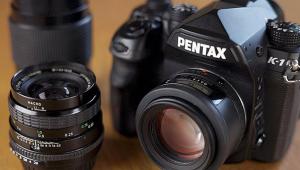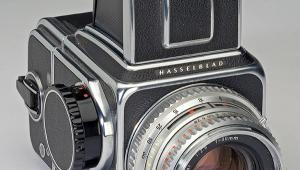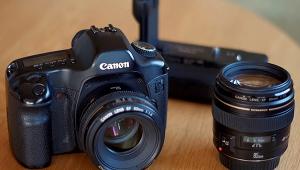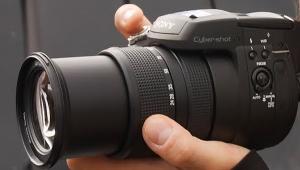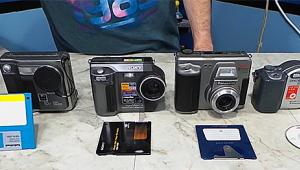The Nikon Historical Society Voigtlnder R2S; Collectible & Classic Rangefinder
This is, by any standards, an unusual camera: a special edition of a special edition. It's the rare (and otherwise discontinued) Nikon S-mount version of the all-mechanical Bessa R2, with minor cosmetic changes to reflect its Nikon Historical Society status, and it comes with the highly desirable and extremely retro-looking 50mm f/3.5 S-Heliar. At $999 it's not cheap, but quite honestly, it isn't expensive either, whether you are looking for a camera to use and to integrate into an existing Nikon S system; a collectors' piece; or a classic rangefinder in its own right.
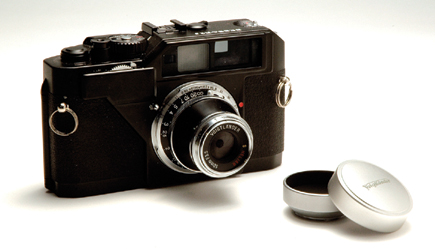 |
|
|
The Nikon S mount is of course derived from the 1932 Contax lens mount, with a slightly different angle of rotation between infinity and the closest focusing position of around 0.9 meters, 3 ft. As a result, while wide angles and slow standard lenses can be freely interchanged between Nikon S, Contax, and Kiev, fast standard and longer lenses do not couple correctly at all distances. They are all right at infinity, but the closer you focus, the more you have to stop down, until you can no longer stop down far enough to let depth of field cover the discrepancy. This is why Voigtländer also made the R2S, a Contax-mount version of the same camera specifically for Contax lenses.
The body differences are minor. The only significant one is that the front plate is finished in what Voigtländer calls "piano black" instead of the speckle black of the rest of the body. There is no other identifying mark: no NHS engraving, not even a prefixed serial number. The three ways you can tell it's a special edition are first, that it comes in a box marked "Special Set for NHS"; second, that there is a letter of authentication from Robert Rotoloni, founder of the Nikon Historical Society, confirming that the serial number in question is part of the NHS series; and third, the unique 50mm f/3.5 S-Heliar on the front.
For me, that lens alone is almost reason enough to buy the camera, even if you then threw the body away (which I certainly wouldn't recommend--unless you want to give it to me). Not only is it very pretty, in a '30s-retro sort of way: it's also one of the sharpest 50mm lenses ever made. Of course, so it should be. A 50mm f/3.5 is not hard to design, with modern wave-front computer design programs and current glasses. But it really is very, very nice indeed.
 |
|
|
It's also strange. The diaphragm has no click stops: their absence makes you realize why they are so widely used. But it operates smoothly and continuously from f/3.5-f/22 with non-equidistant markings, a very vintage touch: f/4-f/5.6 is 6mm (call it a 1/4"), but f/8-f/11 is only about 4mm (1/6") and f/16-f/22 is a mere 2.5mm (1/10") or so. There are two scales, too, because the lens rotates during focusing.
The filter thread is a tiny 27mm, though as with all Cosina-Voigtländer lenses the (39mm) push-on lens cap fits over the shade, itself a lovely little thing in what feels like solid brass with a satin chrome exterior and ridged, matte-black-paint interior.
What is more, it's a proper standard lens, with no focusing mount. That's right: the focusing mount for standard lenses is built into the body (0.9 meters to infinity, meters only, no feet scale), and you can focus it either with a little finger-wheel just in front of the shutter release, or by twisting the lens itself. A rotating lens mount necessarily implies a lens that rotates during focusing.
The actual focusing movement is 180°, which is generous enough by modern standards, but the focusing wheel turns through a seemingly interminable 360° or more. This gives a great illusion of precision, but illusion is all it is: the 38mm rangefinder base, reduced to an effective 27mm or so by the 0.7x viewfinder magnification, is more than adequate for the 50mm f/3.5 and wide angle lenses, but the base length is the limiting factor for focusing precision, not the number of times you can turn the focusing wheel.
If you use the focusing wheel, you will automatically unlock the infinity lock: like many prewar designs, the focus is designed to lock at infinity. While infinity locks are convenient with collapsible lenses, and very useful indeed with the Contax, Kiev, and Nikon mount where lenses should only be changed at infinity, they are also pretty infuriating if you focus using the lens barrel. With all lenses other than 50mm, the infinity lock is permanently disabled.
This is because other lenses fit on a separate, larger outer bayonet. The little lug at about 10 o'clock on the lens mount (seen from the front) is pushed aside by the collar of the external bayonet mount. Wacky? Yes, but this is a '32 design, and the very idea that you can still interchange modern bodies and lenses with those made almost three quarters of a century ago has a good deal of charm in its own right.
I have already indicated what I believe to be the three markets for this camera, but it is worth recapitulating all three briefly.
First, if you already own any Nikon S-fit rangefinder cameras, the NHS R2S is an excellent complement to the system and, of course, offers through the lens metering, which never appeared on the classic Nikons: 1 ('48), M ('50), S ('51), S2 ('54), SP ('57), S3 ('58), S4 ('59), and S3M ('60). Part of the purchase price of the NHS R2S edition goes to the Nikon Historical Society, too.
Second, I believe it will be a collectors' piece, though I am always a bit suspicious about special editions. In this case, its very anonymity may work in its favor. Hard-core camera collectors love boxes and documentation, and this camera really has to have both in order to live up to its collectible status. The unique lens will give the game away to aficionados, but it is after all interchangeable and cameras and lenses will become separated over the years; the lens may well end up more collectible than the camera, not least because it is more recognizable.
Third--and this may be the surprising choice--the camera is surprisingly usable. First, if you use mostly digital but maintain a nostalgic affection for film, this is as retro as you can easily find. Unlike your current digicam, it won't have been superceded eight times in the next decade: it's a keeper. If you are the sort of person who doesn't really have much interest in photography but drives a classic car or rides a classic motorcycle, or if you just appreciate old-fashioned virtues, this is an understated classic camera, and probably a bargain at $999.
Voigtländer cameras and lenses are imported by Photo Village (www.photovillage.com) in New York and Stephen Gandy (www.cameraquest.com) in California; the NHS R2S set is available only from Stephen Gandy.
For further information on the art and craft of photography from Roger Hicks and Frances Schultz, go to www.rogerandfrances.com.
